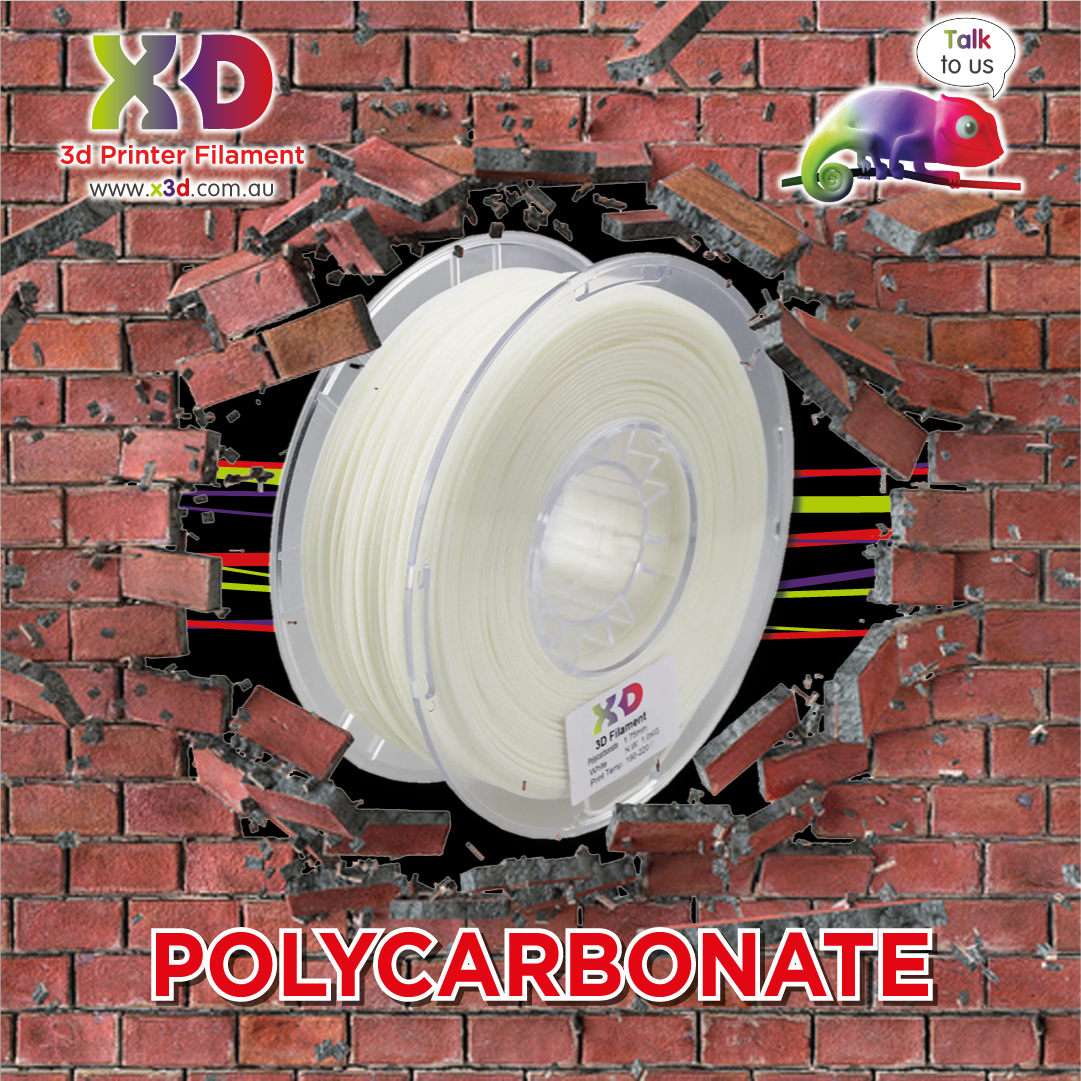Polycarbonate is known for its combination of extreme features: impressive strength, toughness, durability, impact resistance, and heat resistance. This naturally transparent thermoplastic can create high-wear and high-stress 3D prints that stand the test of time and durability, such as automotive components, exterior outdoor fixtures, protective gear, eyewear parts, and medical devices.
While its the filament’s extreme heat resistance is considered a boon, it is also its bane as it brings forth several printing issues. Despite these problems, the filament’s redeeming qualities more than make up for its shortcomings since it is the strongest out of all the 3D printer filaments, including the popular ABS and Nylon.
What is polycarbonate?
As we mentioned above, polycarbonate is a naturally transparent thermoplastic that is highly resistant to heat and impact, which makes it perfect for use in tough environments and engineering applications. Its partial flexibility also allows it to be used on parts that need to be bent to some degree.
However, its powerful qualities also cause it to have several drawbacks. It requires extremely high printing temperatures which causes it to be more prone to warping and oozing. It is also terribly hygroscopic, meaning that it absorbs more moisture from the air than most filaments so you have to be careful with storing it in a moisture-free and airtight container when not in use. Failing to do so can make its prints weaker and defective.
Features of the Polycarbonate Filament
- Naturally transparent
- Partially flexible
- High glass transition temperature
- Heat resistant
- Impact resistant
- Prone to warping and oozing during printing
- Hygroscopic
Here are ways that you can use polycarbonate:
- Remote-controlled cars
- Clear components for prototypes
- Machinery guards
- Drones
- Electronics casings
- Eyewear
- Parts and models that are under the mercy of high heat and stress
Helpful Tips to 3D Printing with Polycarbonate
Print Settings of the Polycarbonate Filament
Print temperature: 230-270°C
Bed temperature: 80-120°C (heat bed and enclosure required)
Printing Speed: 30-90 mm/s
Polycarbonate is not for the faint of heart. If you’re a 3D printing newbie or if this is your first time to use this filament, you may not be able to have a lot of success printing with it the first time. While its level of printability might turn off some users, there is a way to increase the likelihood of success when printing with polycarbonate.
Here are tips to printing with polycarbonate successfully.
- Maintain the print speed no higher than 30mm per second:
Polycarbonate thrives in slower print speeds since it keeps the temperature stable. A heated bed is also required to keep the temperature high all throughout the printing process.
- Use BuildTak or Dimafix Pen to get the first layer right:
The first layer sets the tone for the rest of your print. Once something goes wrong with the first layer, you would need to restart the project as the succeeding layers are guaranteed to warp. You could prevent this by using BuildTak or Dimafix Pen to improve the first layer adhesion.
- Turn off the fans
You need to keep the temperature at a high level during printing, which is why you need to disable the fans or put them at low speed to prevent temperature inconsistencies.
- Increase retraction distance and speed to prevent oozing
Polycarbonate requires high printing temperatures, so you need to make sure that the fans are disabled during printing to keep the temperature consistently high. However, doing so increases the risk of oozing and stringing. By setting the retraction distance and speed high, you can prevent the filament from oozing from the nozzle while moving to the next part.
- Add support structures
Due to the extreme print temperature, extruded polycarbonate filament has a high tendency to droop without support. It also has poor bridging capabilities.
Best Polycarbonate Filaments in the Market
X3D Pro Polycarbonate

Diameter options: 1.75 mm and 3.00 mm
While most polycarbonate filaments are prone to warping, X3D Pro Polycarbonate prints at 230-270°C which reduces the risk of warping. It also has a 100% Satisfaction Guarantee — you get a replacement or your money back if you’re not satisfied with the filament.
Polymaker PC-Plus Polycarbonate

Diameter options: 1.75 mm and 3.00 mm
The Polymaker PC-Plus Polycarbonate prides itself of having an attractive crystal-shine finish on the prints that it produces. It is also meant to have improved heat resistance, easy printing, and excellent mechanical strength compared to other 3D printing filaments.
Polymaker PC-Max Polycarbonate

Diameter options: 1.75 mm and 2.85 mm
Polymaker PC-Max Polycarbonate makes printing with polycarbonate a lot easier with its easy-to-manage properties. It is also easy to smooth during post processing.
Order the best polycarbonate 3D printing filaments today!
If you want tough, durable, and heat-resistant 3D prints, use polycarbonate filaments. If you have any questions regarding polycarbonate or anything 3D printing related, feel free to get in touch with us through email at x3d@x3d.com.au.

